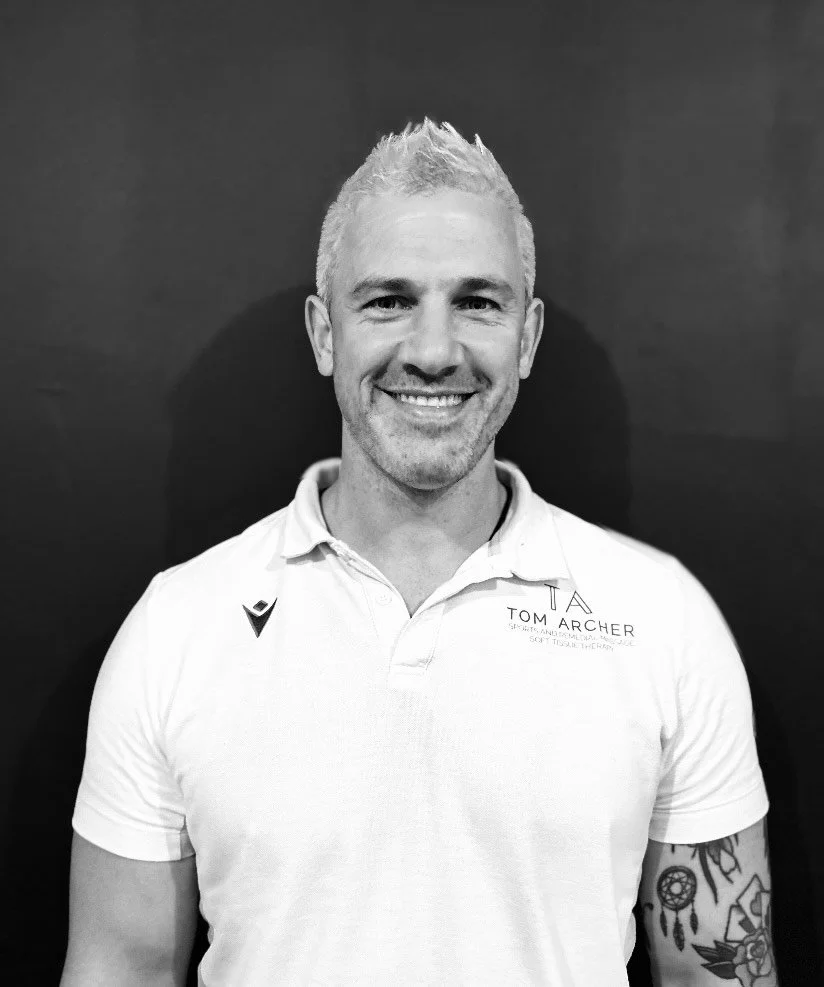Sports Massage
Sports massage is extremely beneficial for recovery of an Injury, the rehabilitation of an injury or for preventing injury at the outset of physical work or sport. It is the skilled, manual, therapeutic application of soft tissue remedial techniques that are selected and performed after careful consultation, recording of medical history and appropriate general and specific assessment.
As with all massage treatments, the therapist will adapt the pressure and techniques used to suit the client’s individual needs and preferences.
At The Wellington Health & Wellbeing Centre our sports masseurs also use Myofascial Release Technique (deep tissue work), Soft Tissue Release (STR) and Active Isolated Stretching.
Myofascial Release
Myofascial Release technique works by locating the tissue’s restrictive barrier and by applying a local force, the tension within the fascia releases. Fascia is the connective tissue that gives support and protection to the structures within your body including the muscle tissue. This tissue can be restricted through everyday stresses and strains, overuse, trauma and sometimes even illness, all of which can create pain in the affected areas and can restrict movement and a bodily imbalance.
This work elongates and opens the tissue thus activating the body’s natural healing processes.
There are two methods utilized when this type of treatment is undertaken: Active, is when client is asked to move the specific part of the body being treated. Passive, is when the client is asked to relax areas being treated.
Myofascial Trigger Point Release
A Myofascial Trigger Point is a hyperirritable spot, usually within a taut band of skeletal muscle or in the muscle’s fascia. The spot is painful on compression and can give rise to characteristic referred pain and tenderness.
Trigger points are believed to be caused by overuse of a muscle (repetitive strain), physical traumas (sports injury, car accident, fall etc.), alcohol or drug abuse, a difficult birth experience, long term emotional stress, dietary deficiencies and a host of other causes.
Soft Tissue Release (STR)
STR is an advanced massage technique widely used in assessing and stretching soft tissues; muscles, fascia, tendons and ligaments.
Muscles are made up of strands of muscle fibres which should lie neatly alternating with one another. Each muscle has attachment points where they attach to bones or other connective tissue. However, muscle fibres can become damaged, congested and tangled. This can distort attachment points and cause restrictions and pain.
Stretching is often used for easing the pain of muscle tension and realigning the body so that it functions in a more optimal way. However, unlike generalized stretching, soft tissue release targets specific areas of tension within a muscle. It is also useful for targeting muscles that are difficult to stretch actively and for isolating a muscle within a group of muscles that would normally stretch together.
STR involves the therapist using manual pressure on a muscle to create a temporary false attachment point and then taking the muscle into a pain-free stretch to untangle the muscle fibres. STR is used to increase range of movement, relieve pain, prevent, repair and manage injuries.
STR is an excellent way of treating tendonitis in a muscle as it takes pressure off its point of origin, which is where the inflammation occurs in this condition. It has also been proven to be useful in the treatment of certain conditions such as medial and lateral epicondylitis (Golfers and Tennis Elbow) and plantar fasciitis (Policemen’s Foot/Heel) as it stimulates tissue repair in these conditions
Active Isolated Stretching (AIS)
Active Isolated Stretching (AIS) is a stretching technique that has been created and perfected by Aaron Mattes in the USA, over the past 40 years. It is one of the methods most used by today’s athletes, massage therapists, personal/athletic trainers and professionals, and allows the body to repair itself and also to prepare for daily activity. The AIS technique involves the method of holding each stretch for no more than two seconds. This method of stretching is also known to work with the body’s natural physiological makeup to improve circulation and increase the elasticity of muscle, joints and fascia and it works deeper into the core muscles and fascia.
The Active Isolated Stretching method of muscle lengthening and fascial release is a type of Athletic Stretching Technique that provides effective, dynamic, facilitated stretching of major muscle groups, but more importantly AIS provides functional and physiological restoration of superficial and deep fascial planes. This technique can be used to treat people of all ages & from all walks of life, helping to improve their flexibility, general well being & quality of life.
Many experts advocate that stretching should last up to 60 seconds. However, prolonged static stretching, which has long been the gold standard in athletics, actually decreases the blood flow within the tissues, creating localized ischemia & lactic acid build up. This can potentially cause irritation or injury of local muscular, tendonous, lymphatic, as well as neural tissues, similar to the effects and consequences of trauma and overuse syndromes.





